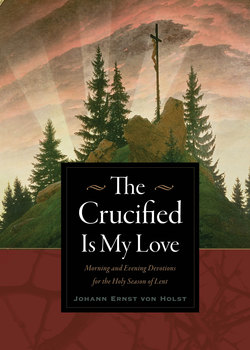Читать книгу The Crucified Is My Love - Johann Ernst von Holst - Страница 6
На сайте Литреса книга снята с продажи.
ОглавлениеPreface
JOHANN ERNST VON HOLST (1828–1898) was a Lutheran pastor in the Baltic country of Latvia. In the 1800s Latvia had a strong German population that dated to the thirteenth century. These Germans were for the most part upright, community-minded citizens, deeply grounded in their Lutheran faith. Riga, the capital, was part of the Hanseatic League; its citizens were merchants. (Around 1890, Russia took over Latvia, forcing the Germans to emigrate to Germany or to accept “Russification” of their schools and public institutions.)
Von Holst served as pastor in Wenden (today Cesis). He was remembered for his lively narrations of Bible stories and detailed descriptions, particularly in his children’s sermons and confirmation classes. In 1877 he became senior pastor in the St. James Church in Riga. He was president of the board of Riga’s Magdalene Asylum – a home that gave women who had nowhere else to go work and accommodation.1 He retired as pastor at Pentecost 1890 and died July 26, 1898.
Von Holst published a history and character sketch of the prophet Elijah in 1893, Der Prophet Elias: Ein alt-testamentliches Geschichts- und Charakterbild. A review of a collection of his sermons in 1876 described them as “fresh and spirit-filled,” “a real treasure, indisputably among the best homiletic literature of the Lutheran church.” “The sermons embrace all aspects of our inner life and vary in their tone. Sometimes it is the inviting love of the Savior, sometimes the dead seriousness of God’s prophets that moves the heart. The biblical interpretation is spiritual, the language noble and simple.”2
The Lenten devotions in this book were published in 1895, and the author gave a copy of the book to Elise Otto, a member of his congregation at New Year’s 1896 (my great-great-grandmother and the grandmother of Bruderhof founders Emmy Arnold and Else von Hollander). It has been passed down and cherished by the family, pulled out and read every Lent. Around 1980 Kathleen Hasenberg, a family friend, translated it into English.
In the original German, each devotion begins with a hymn, followed by the scripture text, the interpretation, a prayer, and a final hymn. In this English edition the hymns and prayers have been omitted. Von Holst’s expositions with their vivid detail – sometimes imaginative and sometimes based on historic research – will draw readers into a deep contemplation of Christ’s suffering and urge them to accept Jesus into their hearts.
Emmy Barth Maendel
1 see Rigasche Stadtblätter 1895.
2 Rigasche Zeitung, September 23, 1876.
